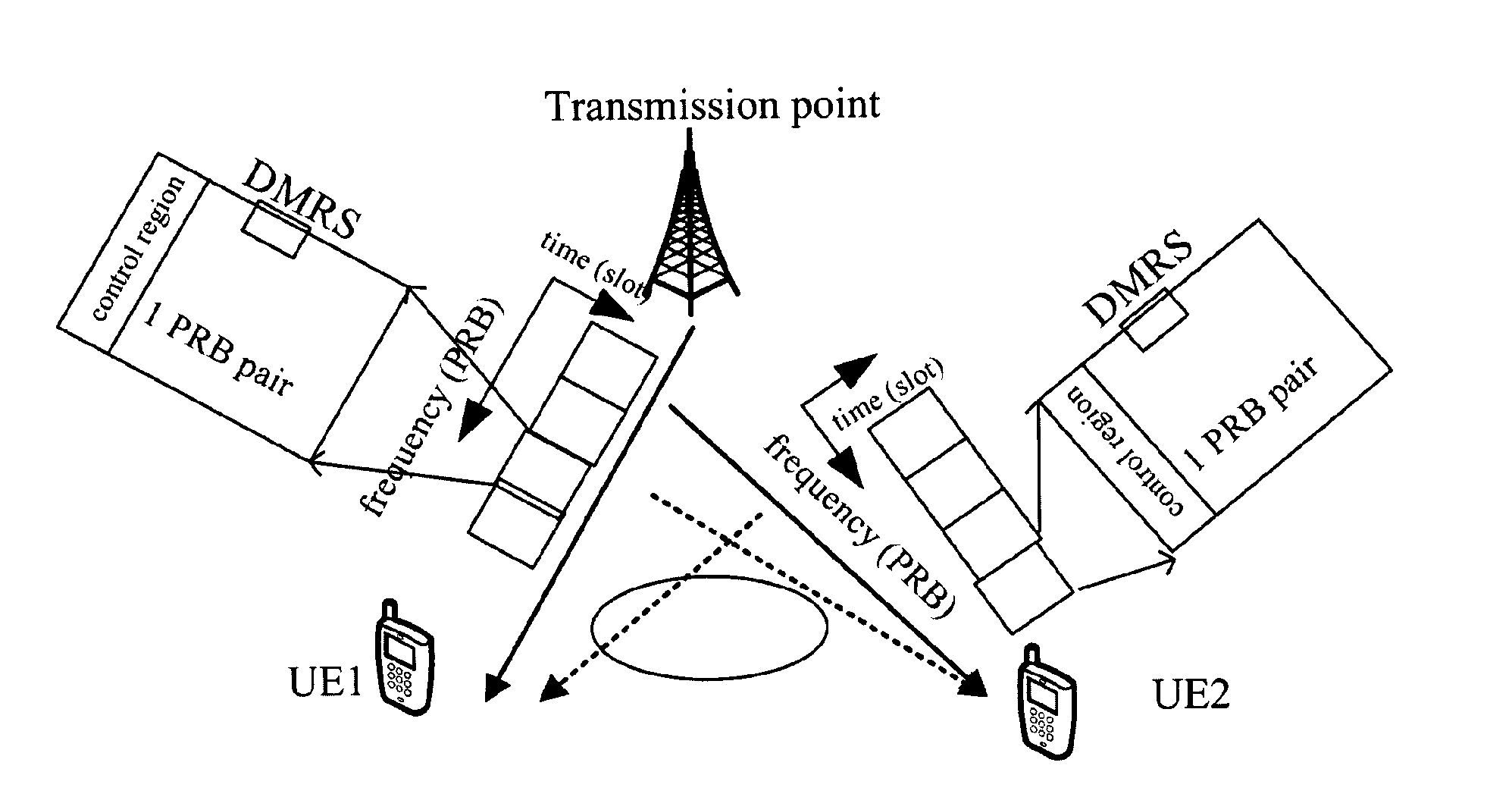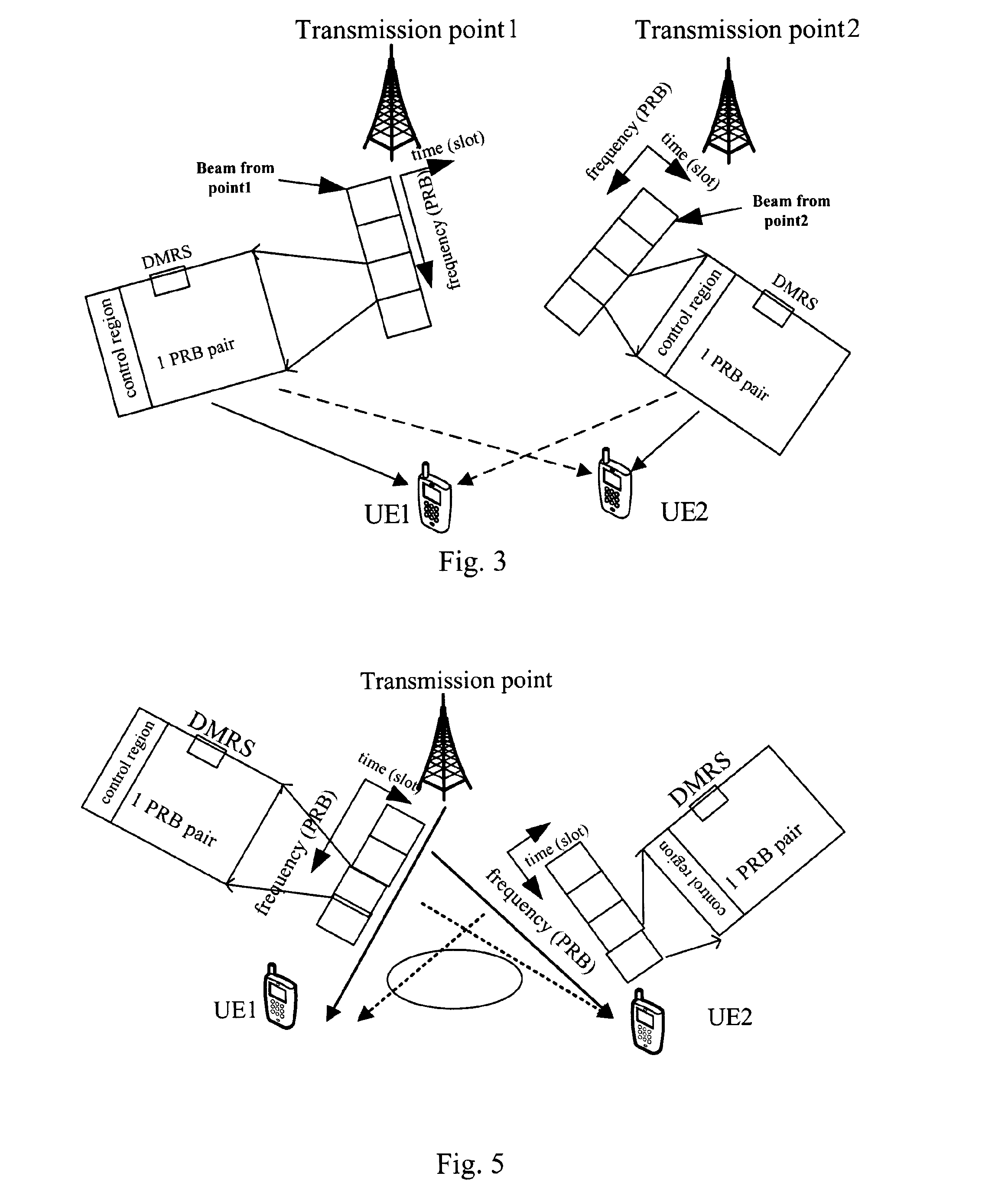Method of scrambling signals, transmission point device and user equipment using the method
a signal and transmission point technology, applied in the field of signal multiplexing method and reference signal design in communication system, can solve the problems of interference between dmrss from adjacent transmission points and dmrss from multiple transmission points, and achieve the effect of reducing signal overhead
- Summary
- Abstract
- Description
- Claims
- Application Information
AI Technical Summary
Benefits of technology
Problems solved by technology
Method used
Image
Examples
first embodiment
[0054]FIG. 7 is a block diagram showing a transmission point device according to the first embodiment of the present disclosure.
[0055]The transmission point device 700 according to the first embodiment of the present disclosure is used for communicating with a UE in a communication system. The transmission point device 700 transmits, to the UE, RS signals which are assigned on predetermined locations (radio resource, which means the time and / or frequency resource such as sub-carrier, sub-frame, etc.) of at least one layer of resource blocks with the same time and frequency resources. As shown in FIG. 7, the transmission point device 700 may include a random seed generation unit 701, an initialization unit 702, a scrambling unit 703, and a transceiver unit 704. The random seed generation unit 701 generates a random seed based on a UE specific ID. The initialization unit 702 initializes a scrambling sequence by the random seed generated in the random seed generation unit 701. The scra...
second embodiment
[0067]Comparing the equation (2) brought forward in the first embodiment and the equation (1) for DMRS random seed generation in release-10, it is found that the random seeds generated from the equation (2) may collide with the random seeds generated from the equation (1), because the range of the parameter n_RNTI in the equation (2) is 0˜216−1. Considering a case where the random seeds generated from the equation (1) are assigned for release-10 UEs while the random seeds generated from the equation (2) are assigned for release-11 UEs, Such collision may produce problems if release-10 UEs with the random seeds generated from the equation (1) and release-11 UEs with the random seeds generated from the equation (2) coexist.
[0068]To resolve the above collision problem, equation (3) gives one exemplary improvement on the equation (2) in the first embodiment as follows
cinit=(└ns / 2┘+1)·(2*Max+1)·216+(n_RNTI+2) (3)
Where Max=Maxim_value(cell_id), representing the maximum value of transmiss...
third embodiment
[0071]As described before, the blind detection of DMRS at a receiver side can help an UE to estimate the interference in MU-MIMO operation. However, if the equation (2) or (3) is used to generate DMRS random seeds, the UE may not be able to perform the blind detection, because there are too many possibilities for the UE specific random seeds or the blind detection space is too large in this case. For example, since there are 216 possibilities for the value of n_RNTI in both the equation (2) and the equation (3) as discussed above, there are 216 possibilities for random seeds generated from the equation (2) or (3), which results in much more dimensions of DMRS than those of FIG. 6 using the release-10 DMRS random seed generation equation (1). It is difficult to perform the blind detection of DMRS in a case of too many dimensions of DMRS.
[0072]Orthogonality between MU-MIMO DMRS ports is another concern for the equation (2) and the equation (3). As shown in FIG. 5, there are two UEs, i...
PUM
 Login to View More
Login to View More Abstract
Description
Claims
Application Information
 Login to View More
Login to View More - R&D
- Intellectual Property
- Life Sciences
- Materials
- Tech Scout
- Unparalleled Data Quality
- Higher Quality Content
- 60% Fewer Hallucinations
Browse by: Latest US Patents, China's latest patents, Technical Efficacy Thesaurus, Application Domain, Technology Topic, Popular Technical Reports.
© 2025 PatSnap. All rights reserved.Legal|Privacy policy|Modern Slavery Act Transparency Statement|Sitemap|About US| Contact US: help@patsnap.com



